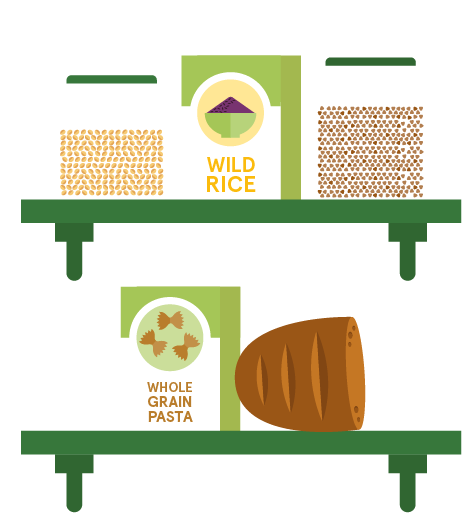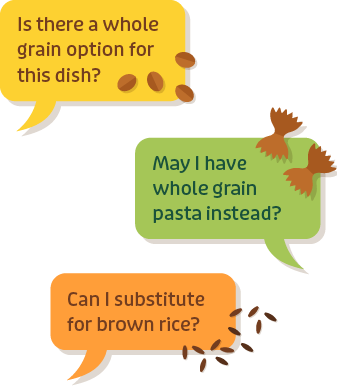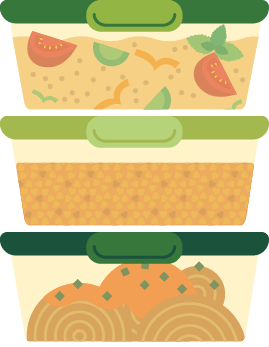Incorporating more whole grains into our diet offers a myriad of health and environmental benefits: from improving our vitamin and mineral status and fibre intake to lowering our non-communicable disease risk and carbon footprint. Eating more whole grains doesn’t have to be challenging or bland.

Here are some practical tips to help you make a smooth and delicious switch:

If whole grains are new to your diet, introduce them gradually. Replace half of your refined grains with whole grains and slowly increase the proportion as your palate adjusts.

Mix brown rice with white rice

Try 50% whole wheat pasta

Mix white pasta with whole grain pasta

Swap half of the wheat flour for whole wheat flour when baking


There’s a wide variety of whole grains to explore beyond just whole wheat. Have you ever tried farro? Millet? Or quinoa? Try out a new one this week and discover new favourites. Each grain has a unique flavour and texture to make your meals diverse and exciting.

When buying whole grain products such as breads, breakfast cereals, granola bars, bagels or English muffins, it’s not always easy to identify the whole grain options. We’ve identified five criteria to help guide you in making the switch to whole grain products:



Don’t hesitate to ask for whole grain options when dining out.
Many restaurants offer whole grain choices, and even if it’s not on the menu, it may be available upon request. Many restaurants now offer whole grain bread, brown rice, or whole grain pasta as alternatives.

Prepare large quantities of whole grains like quinoa, brown rice, or whole grain barley ahead of time and store them in the fridge. This makes it easy to add them to salads, soups, or as side dishes throughout the week.
Did you know whole grains also freeze well? If stored properly in airtight containers, most cooked whole grains can be kept for 2 to 6 months in the freezer.
Cooked whole grains last about 2-3 days. However, be careful with rice! Rice can contain bacteria spores that can survive cooking. Therefore, it’s recommended that rice should be eaten within 1 day. The longer rice is kept, the more likely it’s that the bacteria will make it unsafe to eat.



One of the best ways is to replace your refined grains for a whole grain version – swap white rice for brown rice, choose whole wheat bread over white, and explore the variety of whole grain pastas available instead of white pasta.
Flip the cards below and find out some quick and simple whole grains swaps:
Learn to identify whole grain products, cook delicious meals, find practical tips for a smooth, gradual switch, and much more!